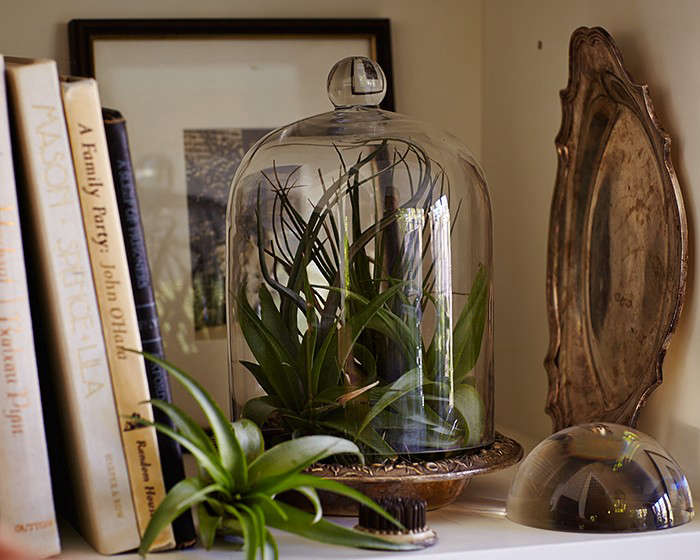Pity the poor tillandsia. With its affable, low-maintenance personality, your little friend tends to get ignored on a bookshelf. Its nickname–air plant–may reinforce the idea that it needs no special attention.
But while an air plant doesn’t need soil, it does need to eat. Here’s how to water an air plant:
Photography by John Merkl for Gardenista.


Fine tune the rule: If the air in your house is particularly dry, water an air plant more often (every five days) and in a humid environment, water every ten days.

Instructions:
Step 1: Fill a basin, bowl, or sink with water and dunk your air plants.
Step 2: After 10 minutes, remove the plants from the water and spread them on a towel to dry.

Be particularly careful with bulbous tillandsias (you will recognize them because they have visible bulbs at their bases) because if they get waterlogged, they will rot.

N.B.: We’re in the throes of houseplant season and here’s some help to keep yours happy in winter:
- Succulents: 8 Tips to Help Your Favorite Indoor Plants Survive Winter.
- Houseplants 101: A Field Guide to Planting, Care & Design.
- Gardening 101: How to ID an Air Plant.
- Air Plants 101: A Field Guide to Planting, Care & Design of Tillandsias.
- For more ideas about how to display air plants, see Hooked on Houseplants, Teen Edition.
- 9 Secrets for Growing Succulents Indoors.
- Best Houseplants: 9 Indoor Plants for Low Light.
Finally, get more ideas on how to successfully plant, grow, and care for air plants with our Air Plant: A Field Guide.
Finally, get more ideas on how to plant, grow, and care for various houseplants with our Houseplants: A Field Guide.
Interested in other tropical plants for your garden or indoor space? Get more ideas on how to plant, grow, and care for various tropical plants with our Tropical Plants: A Field Guide.












Have a Question or Comment About This Post?
Join the conversation (18)